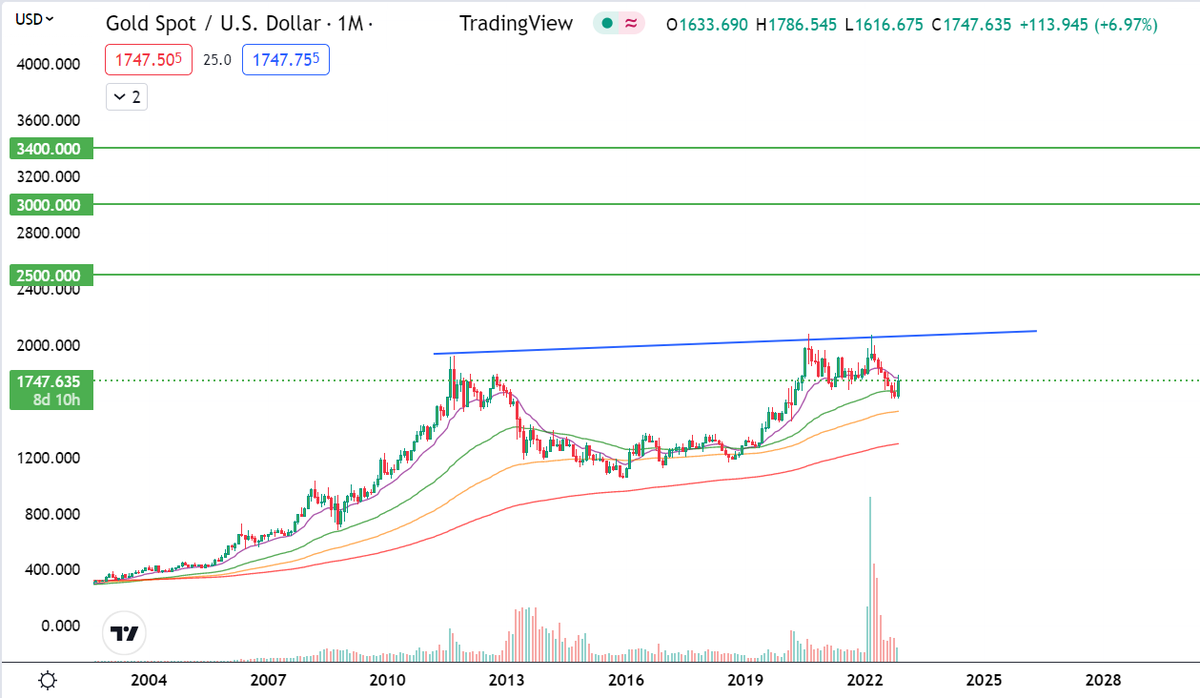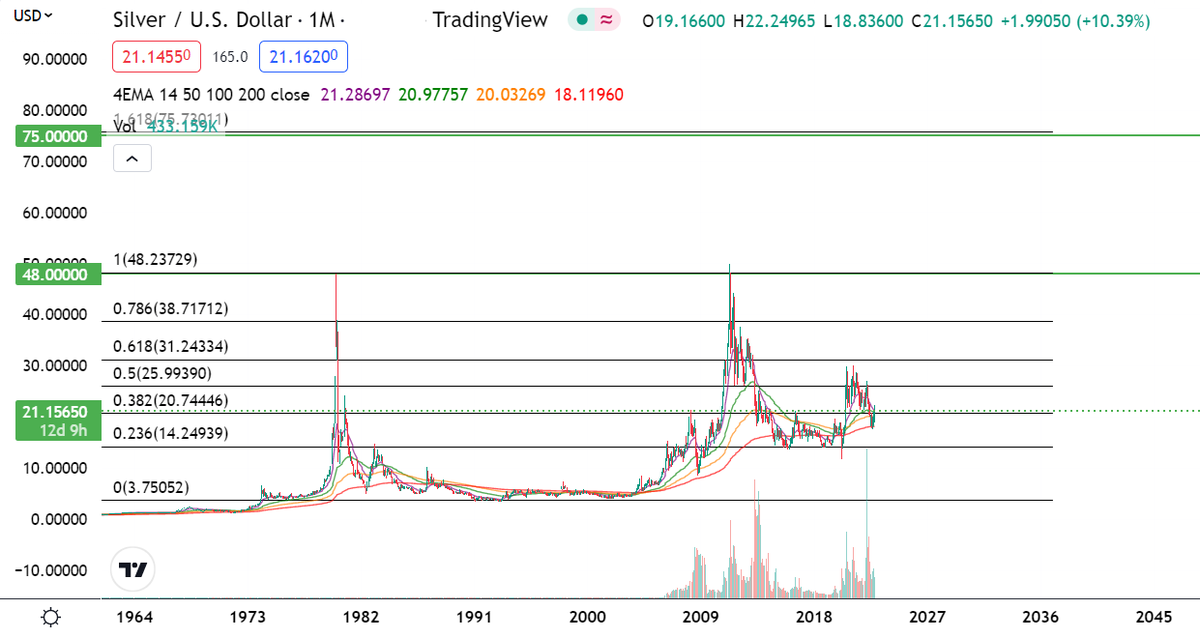
Bank of Indonesia Governor Perry Warjiyo announced that Jakarta is following the lead of the BRICS bloc to reduce dependence on the USD and diversify the use of currency in international trade. Indonesia is "more concrete" than the BRICS...

Don’t waste your time – keep track of how NFP affects the US dollar!
Data Collection Notice
We maintain a record of your data to run this website. By clicking the button, you agree to our Privacy Policy.

Beginner Forex Book
Your ultimate guide through the world of trading.
Check Your Inbox!
In our email, you will find the Forex 101 book. Just tap the button to get it!
Risk warning: ᏟᖴᎠs are complex instruments and come with a high risk of losing money rapidly due to leverage.
71.43% of retail investor accounts lose money when trading ᏟᖴᎠs with this provider.
You should consider whether you understand how ᏟᖴᎠs work and whether you can afford to take the high risk of losing your money.
Information is not investment advice
Central Bank Digital Currencies (CBDCs) are virtual national money. The idea of creating such currencies came to the authorities after the success of cryptocurrencies, which also exist only in digital form.
Unlike Bitcoin and Ethereum, CBDCs are centralized and regulated by central banks, thus offering less freedom and anonymity. At the same time, the transition to a digital currency promises many positive changes that can favorably affect the countries' economies. In this article, FBS analysts examine the nature of CBDCs and explain which assets may outperform because of them.
The list of countries that have shown interest in creating digital currency is extensive.
The country began actively developing CBDC in 2019, but the COVID-19 pandemic has significantly accelerated this process. In 2020, experiments on the introduction of the digital yuan were carried out in several cities in China.
In January 2021, the Agricultural Bank of China (ABC) tested the functionality of exchanging e-CNY for fiat money at regular ATMs in Shenzhen. In the spring, six of the largest financial institutions experimented with creating digital yuan wallets.
As of the end of October 2021, 140 million people have opened e-CNY wallets.
In October 2020, the ECB released a report on the possibility of creating a digital euro. The regulator assumes that digital currency will become a full-fledged replacement for fiat money. In mid-July 2021, the ECB announced the start of a phase to study the possibility of creating a CBDC.
One of the pioneers in the creation of CBDC is Sweden, a country that can be the first in the world to refuse to use cash. From 2010 to 2020, the number of people in Sweden who pay for purchases in cash fell from 39% to 9%.
More countries are testing CBDC implementation, such as Japan, the Bahamas, and Russia.
CBDCs can significantly change the financial system.
For example, CBDCs will increase the transparency of payments and government control over the spending of budget funds since governments will track any transaction with these digital assets. The authorities can finance state projects using smart contracts, ensuring that money is spent only for its intended purpose. As a result, officials and contractors will no longer be able to "lose" billions from the state budget. The volume of the shadow economy will decrease, and it will become impossible to work illegally.
For central banks, one of the main advantages of CBDCs is that it will be easier for them to regulate monetary policy. The transition to digital finance will allow them to monitor the economy and respond to real-time changes. As a result, stability and security within the system will increase. Moreover, CBDCs will help banks reduce the costs of transfers (including cross-border ones).
The widespread use of CBDC brings not only benefits but also huge risks associated primarily with the tightening of government control over society.
CBDC is an ideal tool for total state control over most aspects of citizens' lives. Let’s see how this control will be exercised.
The state will see not only a person's income but also their expenses. The authorities can compare whether your expenses match your income and automatically write off taxes on each income. And, of course, the government will be able to block the user's CBDC wallet anytime.
CBDCs allow governments to control and regulate the level and quality of consumption. Smart contracts can be configured so people cannot buy what they are not supposed to, or they will automatically be taxed for overconsumption.
CBDCs allow restricting citizens' movement without any QR codes, residence permits, and document checks. It is enough to limit the territory or duration of digital currency spending. It will be easy to regulate passenger flow and traffic. For example, you can pay for the subway only from 7 am to 9 am, while your neighbor can pay from 9 am to 11 am.
Suppose a country has introduced a system of social rating where some categories of the population receive more privileges and opportunities than others as a reward for certain services to society. People with a high rating can be completely free to manage their money. At the same time, those with low status, on the contrary, can be limited in using money: for example, prohibiting high-ranking citizens from visiting establishments or limiting consumption to the necessary minimum.
An analog of such a system is already operating in China. The current situation with QR codes is implementing the same idea.
As you can see, CBDCs are the exact opposite of cryptocurrencies. Decentralized digital assets are designed to provide people with financial freedom. In contrast, digital currencies of central banks are designed to give the state a tool for total financial control over citizens.
We hope that most of the gloomy predictions above will not come true. If they do, then cryptocurrencies will become one of the alternatives for those who want complete control over their lives and funds.
With the possibility of losing control over their savings, institutional and retail investors may begin to buy real assets such as gold and silver massively. Therefore, FBS analysts believe that the precious metals market can demonstrate exponential growth in the next decade.
XAUUSD, monthly chart

XAUUSD has formed a global cup. Currently, the price is forming a handle. If it breaks above the blue trend line, XAUUSD will move toward $2500 and $3000. By the end of the decade, the price might easily reach $3400 per ounce.
In terms of investment, silver has even more potential than its big brother does. Silver is actively used in the chemical industry, battery production, and production of parts for the electrical industry, so the demand for this metal is constantly growing.
XAGUSD, Monthly chart

XAGUSD also looks bullish, with the primary target at its all-time high of $48. However, the buyers will be able to break through its historical resistance with the third try. In this case, silver will quickly reach $75.

Bank of Indonesia Governor Perry Warjiyo announced that Jakarta is following the lead of the BRICS bloc to reduce dependence on the USD and diversify the use of currency in international trade. Indonesia is "more concrete" than the BRICS...

Hold on to your seats, folks! Bitcoin (BTC) is back with a vengeance, soaring past the $30 000 mark on April 11th, reaching its highest point since June 2022. And it's not just BTC - Ethereum (ETH) is also making gains, trading at $1917 and bagging 3.1% gains...

Hey, have you heard about the latest news on de-dollarization? It's the process of shifting away from the US Dollar (USD) as the world's reserve currency for trading...

eurusd-is-falling-what-to-expect-from-the-future-price-movement

Greetings, fellow forex traders! Exciting news for those with an eye on the Australian market - the upcoming interest rate decision could be good news for Aussies looking to refinance or take out new loans. The Mortgage and Finance Association Australia CEO, Anja Pannek, has...

Hold onto your hats, folks! The Japanese yen took a nosedive after the Bank of Japan (BOJ) left its ultra-loose policy settings unchanged, including its closely watched yield curve control (YCC) policy. But wait, there's more! The BOJ also removed its forward guidance, which had previously pledged to keep interest rates at current or lower levels. So, what's the scoop? Market expectations had been subdued going into the meeting, but some were still hoping for tweaks to the forward guidance to prepare for an eventual exit from the bank's massive stimulus
Your request is accepted.
We will call you at the time interval that you chose
Next callback request for this phone number will be available in 00:30:00
If you have an urgent issue please contact us via
Live chat
Internal error. Please try again later